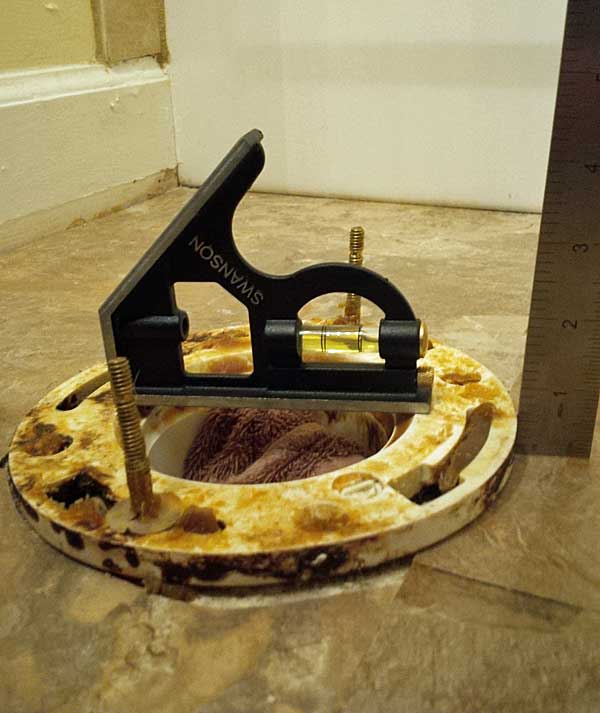I am not a plumber. I suggest posting a photo or 2 that shows the elevation and the materials involved. This would probably increase your chance of getting guesses on pricing.
I am going to assume that you don't measure things with more than 1/8 resolution. If you want to have a toilet that works without leaking for least cost, put some 3/8 or more shims in the front. Put some 1/4 or more shims in the back. With the wax cleaned off, set the toilet in place. Position the shims to make the toilet level (use a level) and a little higher than where it sat limited by the flange. Mark where the shims are with masking tape or washable marker.
Then lift the toilet. Put the wax ring on the flange. Re-position the shims if they moved. Lower the toilet onto the shims. Straight down. Don't rock. Take your time. Once down, be sure that the shims are each tight. If not, push them in to fill the slack. If a shim is loose and you cannot push it in more, pull it out, cut maybe 1/2 inch off of the thin end, and push it back in. Add more shims where they will fit. tighten the closet bolt nuts. Sit on the toilet for a while. Tight the nuts again. Now cut off or snap off the shims that are sticking out. Use it for a day or two. Tighten the nuts again if they are a bit loose. Do not overtighten. So how tight should you make the nuts? If I looked it up and gave you a torque, would that help? If not, maybe use 1 finger on a 6 inch wrench? But I don't know how strong your finger is.
Apply masking tape to the floor and toilet to limit where the cauking will stay. (a practiced person would not need the masking tape, but that is not us.) Apply Polyseamseal tub and tile caulk to the front 85% of the toilet bottom. You can use a wet finger to push in and smooth and taper to the tape. You could use a nitrile glove over your finger if you prefer to not use your bare finger. Once the caulk is in place to your satisfaction, immediately and carefully remove the masking tape. Note that while Polyseamseal tub and tile caulk goes on white, the common "clear" type turns semi-clear. Your shims and gaps will be a bit visible through the Polyseamseal. But it will work reliably. Polyseamseal is also available in white, which may be a better choice with your toilet sitting up some.
This procedure is not tested by experience. Somebody may post a better suggested procedure.
Now doing it right by getting a new flange with a stainless steel ring in place would be best. It would look better because the toilet would not be elevated and it would be stronger. Listen to your wife.

